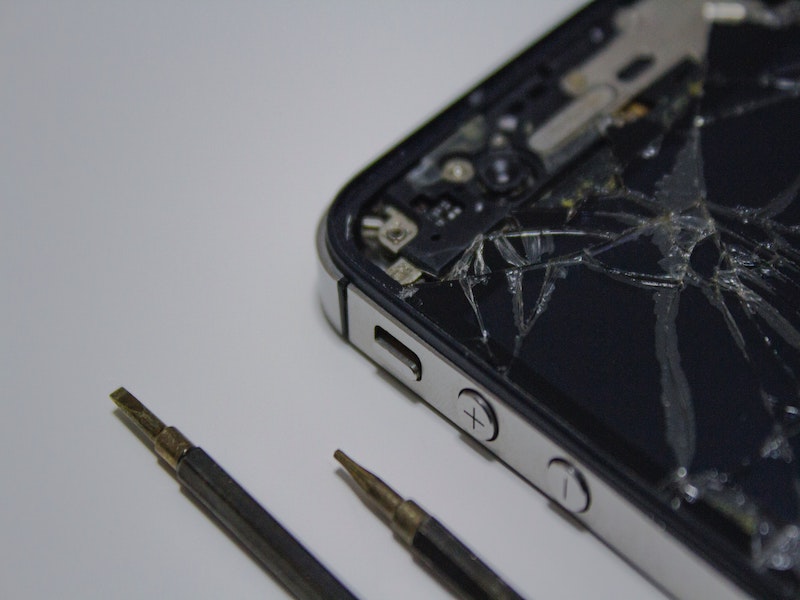One minute your smartphone, laptop, or headphones are working as they always have. The next, bam, they start malfunctioning. Suddenly, the battery on your phone drains after a few minutes. Your laptop becomes achingly slow, the headphones stutter and then die a quick death. It leaves you wondering, was it [insert any technology] made to break?
If you have ever had that thought, don’t worry, you’re not paranoid because the company has designed the product to malfunction. Planned obsolescence is the term used to describe how failure is built into products. The product breaks, not because it is old and at the end of its life, but because a company has planned for it to break at a certain time in its life.
The idea of planned obsolescence is controversial, and no company will admit to designing products that fail. But for a company to continue driving revenue and maximising profits, planned obsolescence is a necessary part of doing business.
Smartphones
The smartphone market provides a case in point. The first iPhone came on the market with a bang in 2007, and up to 2011, only 35% of Americans had a smartphone. Fast forward a few years, and by 2019, that figure has gone up to a remarkable 81% of Americans.
The smartphone market has reached a saturation point. Meaning demand for smartphones has decreased because everyone has one.
Imagine companies in the smartphone market designed a smartphone to be the very best it could be. Their focus; to build a phone with long life, one made with quality and longevity in mind.
If the phone works as it should for years, many people would see no reason to replace the phone. And because most people now own a smartphone, if no one saw any need to replace the phone, revenue in the market would dry up.
That would be a disaster for the phone companies who rely on people buying the latest model, again and again, to generate revenues and maintain healthy profit margins.
Maintaining revenue
Companies are not motivated to make the best possible, long-lasting phone. They are motivated to entice you to keep on coming back for more.
Every company works based on the same logic because they are all driven by maximising profits. And because every company is driven by the same goal, they all seek to benefit by ensuring that customers return for more within a short time frame.
Not too short, to make customers question the quality of the product, but also not too long to mean people aren’t encouraged to buy the latest model.
The ‘latest model’ is another marketing ploy to encourage people to get rid of the ‘old’ smartphone (even though in some cases the old one may only be a few years old) and replace it with a new phone.
The trick is that, in reality, the brand spanking new phone is only a slight upgrade on the current phone.
Your life has hardly improved if you can take a picture with a 10-megapixel camera rather than a 5-megapixel camera. Yet you are convinced into buying a new phone and spending upwards of $1000 for the privilege.
But never mind, because when your phone does break, at least you can comfort yourself with the fact you’re getting an ‘upgrade’.
The uneconomy
Planned obsolescence is a driver of the throwaway culture that has become normalised in modern society.
From the companies perspective, making you buy a product over and over again makes business sense. If they made items that lasted for as long as possible, their customer base would dwindle once everyone had the item.
From a different perspective, an economy should aim to be efficient. To be economic means to use resources efficiently and make the most out of what you have.
Our economy does the exact opposite. It is inefficient because it necessitates that companies continue to create new products and convince us to replace the old product with the new one. Helping them to continue generating profits, increase revenue, and continue to grow.
The issue with the current model is that it places enormous stress on the environment. Throwing your ‘old’ phone away is a major contributor to the 54 million tonnes of electronic waste we create each year.
Many of the components of electronic products are toxic. These human-made toxic substances are alien to the natural world. As Rachel Carson beautifully reveals in Silent Spring, the natural world does not know how to deal with toxic substances and can’t reabsorb them back into natural cycles.
In essence, the toxins poison the natural world, which has unknown knock-on effects on wildlife and the integrity of nature itself.
To make matters worse, the new products that companies make to replace the old products are made from the natural world.
So from one end, we throw away toxic items; from the other, we continue to extract resources from the natural world, placing immense pressure on natural ecosystems.
Every part of the process does not account for the environment that we depend on for life to flourish.
The solution?
The Product as a Service System (PSS) business model offers a solution to the current problem. It gets rid of the throwaway culture while still allowing companies to turn a profit.
Rolls Royce’s ‘Total Care’ business model shows how PSS works. Rolls Royce sells engines to flight companies, but the major difference is that:
Rolls-Royce retains responsibility for ensuring the product performs to customer requirements. The power-by-the-hour charging mechanism (revenues generated per engine flight hour) keeps incentives aligned by rewarding Rolls-Royce when the product is working as needed, and penalising it when it is not.
The important part of all this is that it flips the relationship from a company selling a product to a company selling a service. Because it is not the product in itself we value, but the service it provides us.
Many items we need serve no purpose outside of their service. Take a refrigerator, for example. The fridge has no value in and of itself. What we value is its service, the ability to keep food cold.
We have to buy the product, not because we want to, but because we have to.
In the case of Rolls Royce engines, the airline doesn’t want to buy the expensive engine; but they have to buy it for its service.
The difference is that the Total Care model changes Rolls Royce’ incentives.
The model incentivises Rolls Royce to make the best possible engine — a great thing to know if you’re cruising 30,000 feet in the sky!
Making engines as reliable as possible is paramount for safety issues. But, it is also cost-effective for Rolls Royce, who are less likely to have to fix or replace engines.
One of the key drivers for adopting the total care business model is that it creates a relationship between Rolls Royce and the airline throughout the engine’s whole life cycle. At the end of the engines life, rather than throwing it away (which would be a waste of materials), the parts get repurposed and used in new engines — creating efficiency and reducing dependence on the natural world for material resources.
This system has advantages in that it cuts costs for Rolls Royce, creates value for customers, and builds loyalty and trust between the customer and the company.
From ownership to borrowing
In Rolls Royce case, they still sell the engine to the airline, but in other instances, the company creating the product retains ownership and loans the product to the company or person who requires the service.
Because the company retains ownership of the product, their motivations are flipped.
Rather than designing products to break to make sure you have to buy a new product, companies are incentivised to make the best possible quality products. Doing so makes it less likely for people to return the product due to maintenance issues.
And because the customer is only loaning the item, the customer has to return the item to replace it with a new item at the end of its life.
The company can then repurpose the old product and use it to make new products. This creates a cycle where we stop producing so much waste on the one hand and stop relying on the natural world so much on the other. It also builds relationships of trust with a company and its customers—a win-win-win.
The obstacle in transforming away from the ownership of products to a renter society is that the idea of ownership is embedded within our culture. James Joyce once quipped, “what’s yours is mine, and what’s mine is my own.” It’s hard to imagine a world where ownership is not a bedrock of how we do things.
This sense of ownership is so embedded that replacing an ownership model with a renter society isn’t realistic without wholesale changes to the fabric of the economy and with it society.
So long as companies sell products that we then own, we will continue to see the illogical patterns in the market that incentivise companies to plan for their products to break. The problem is the environment can only take so much abuse. If we continue to dismiss the destructive nature of our behaviour, nature will bite back. And it won’t be pretty when it does.



